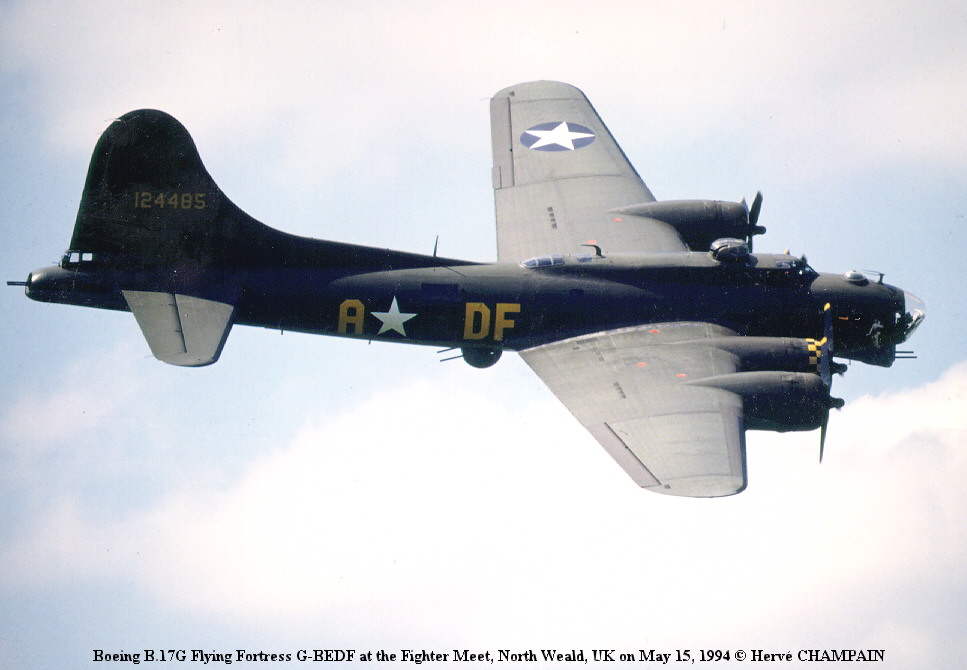|

|
The U.S. Army Air Corps aimed rather high for 1935 - a bomber capable of 250 mph, 10 hours endurance and a substantial payload. This was an era still dominated by biplane fighters that could not achieve such a speed. Yet Boeing was suited to meeting this specification, as they already had experience with speed transport planes. Their answer was a four engine aircraft and their design became the B-17, the most famous bomber of World War II. Its nickname "Flying Fortress" was a misnomer at first. Early B-17's were weakly armed, carring only three gunners operating single machine guns. It's initial role was in the Pacific aimed at bombing enemy ships - a mission no level bomber ever managed to accomplish, but it became widely used by the RAF over Europe on bomber missions into the heart of Germany. Finally, the Fortress was designed as a heavy bomber, well armed with 6 gunner stations and able to carry the load of a heavy bomber. The B-17's place in history was as much due to timing as to design. When the war broke out in 1939, develpment of the true American heavy bomber - the B-29 - was not far enough along so the Fortress became the tool for the high alitude strategic bombing.
|